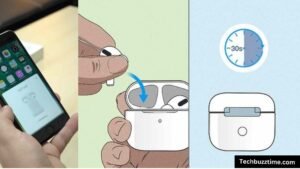Introduction: The patent US1338343A, which originated in France, shows advanced engineering zeal. This article examines the patent’s focus, impact, use, and circumstances of its emergence.
Background of US1338343A
This patent, US1338343A, is referred to as the invention of its author, engineer Jules Verdier from Enghien (France). The granted patent described the thesis of a device about some defined engineering problems. However, explaining this invention’s role in humanity’s struggle for development is important.
Like many branches of society at the turn of the 20th century, engineering had several logistical inefficiencies. The demand for better tools and machines was high. Verdier’s device aimed to optimize operations and increase efficiency in various processes. This patent is ideal for capturing a period when growth could only be achieved through radicals.
Key features
US1338343A patent is dominant in the novel design, style, and function. The patent describes particular provisions aimed at increasing the efficiency of specific activities. Such qualities bear witness to Verdier’s competence and the industry’s requirements at that time.
The other remarkable feature clearly shown on the patent is the device’s durability. The device was purposely made for harsh conditions and is suitable for various industrial uses. The longevity feature makes the invention relevant to date.
Practical Uses
The engagement scope of US1338343A stretches to more than one field. It is almost evident that engineering industries where mechanical devices are used shall have a go with Vernier’s creation. The patent describes the device’s applicability in the duction of construction and all other industries that need sophisticated engineering interventions.
The principles embodied in US 1338343 A can enhance the operational effectiveness of business firms. The patent serves as a guide for practising engineers designing systems with the desire to create something new.
Importance in Modern Engineering
The essence of US1338343A is still relevant in today’s engineering practice. This patent is a significant historical point and a basis for future advancements. Today’s engineers and designers can utilize and modify the iVerdier’s ideas to find solutions to existing problems.
Besides, the provided patent underlines the significance of intellectual property within the creativity process. Patents stimulate innovations by safeguarding inventors’ interests. This chain of innovations is significant in advancing various sectors.
Conclusion
The overall message is rather clear: the methodology behind this patent proves its creators to be geniuses who are intelligent enough to further advance into science and technologies. Its practically infinite spectrum of applications truly emphasizes its potential. As those new industries are born, principles outlined in US1338343A will still be in demand, and new inventions will be based on them.
In conclusion, one can grasp the significance of US1338343A inventions and their patents from the perspective of legal science, providing clarity on the importance of technological progress in society. Such a patent not only solves a number of actual problems but also creates a foundation for future development, meaning that progress will not cease.
FAQs
Here are some frequently asked questions about patent US1338343A:
Q1. What is US1338343A?
Patent US1338343A concerns a technique for creating a dense synthetic cloud, fog, or mist and an apparatus for the same. This patent, filed by Paul Weiss in 1917, extends back to quite an experimental method of exploring weather modification technologies.
Q2. What are the main applications of US1338343A?
US1338343A’s primary application is creating artificial weather conditions. This technology can be used in various fields, including agriculture, entertainment, and research, to simulate specific weather scenarios for testing or aesthetics.
Q3. How does the process work?
The patent issued describes a technique for creating artificial clouds or fog using appropriate elements and methods. While the specifics are included in the patent papers, the gist describes the processes of changing the surrounding ambience to produce condensation visible in the air.
Q4. What are the potential benefits of this technology?
Some of the possible benefits arising out of this include:
- Improvements in agricultural practices through adequate management of moisture.
- We are facilitating the creation of ambient effects in films, theatres, etc.
- We are performing research on meteorology and climate.
Q5. Are there any limitations or challenges associated with US1338343A?
Of course, there are several challenges, including:
- The practicality of large-scale application.
- The possible environmental issues are due to the materials used.
- The regulatory framework is related to weather modification.
Q6. Is US1338343A still relevant today?
Although it may not be common today, US1338343A has very useful technology in both concept and practice. One idea can be researched and used to advance American US1338343A and other similar early patents.






Be First to Comment